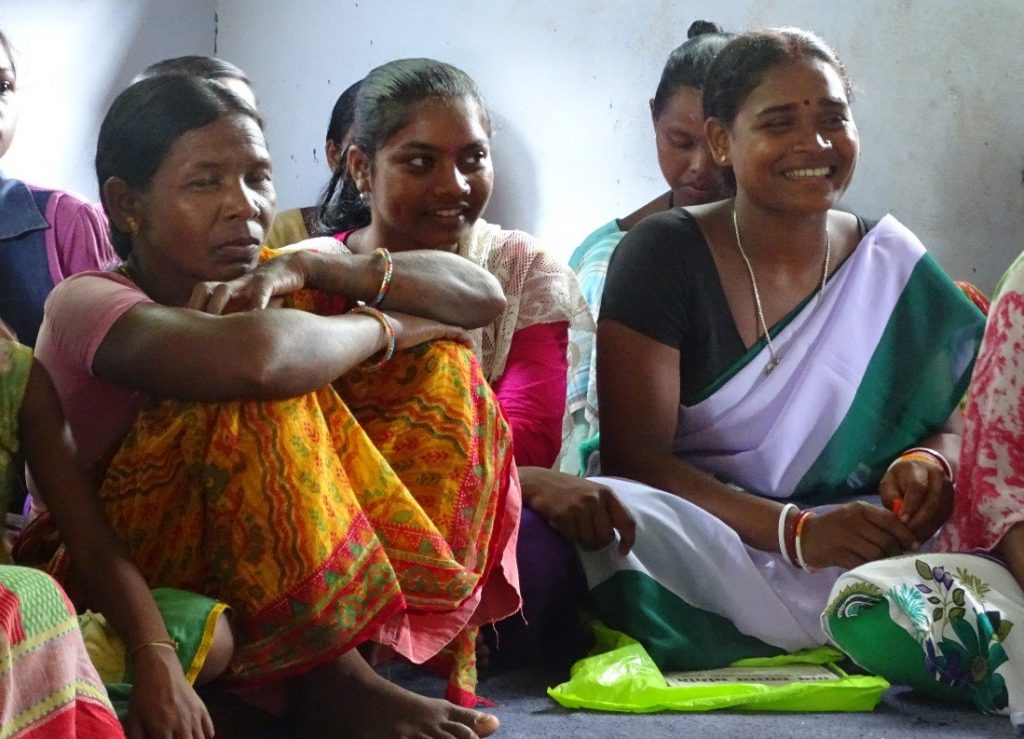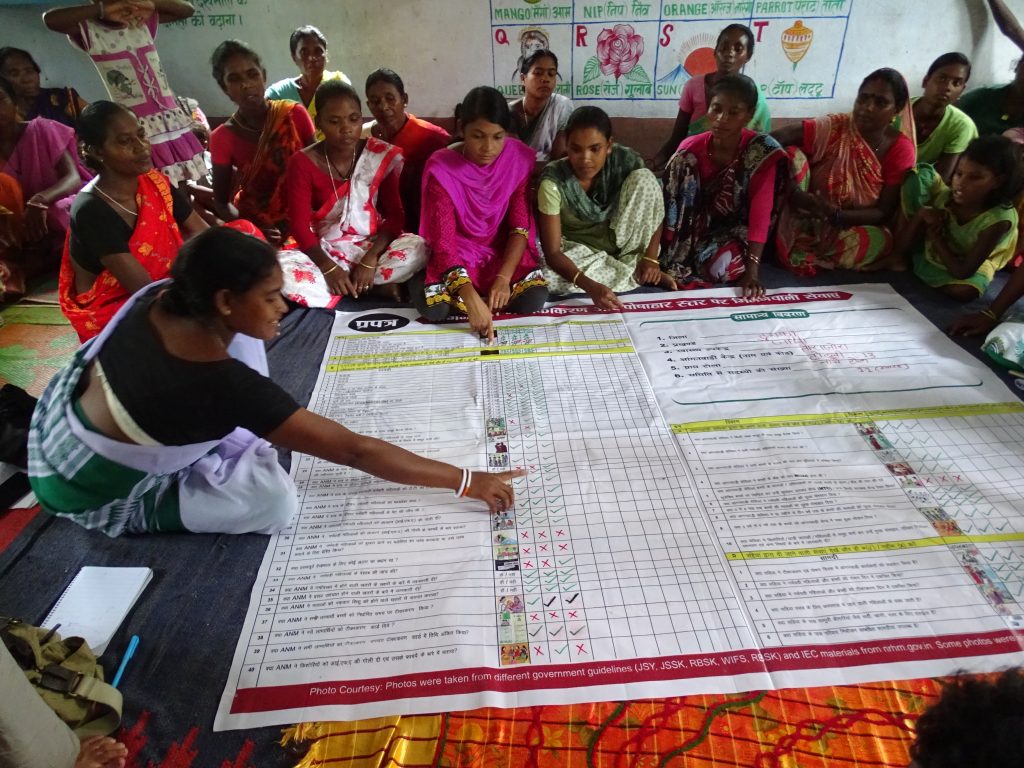
Chabi Murmu has been working as an Accredited Social Health Activist (ASHA) in Dhodli village since 2007. She had little knowledge of her roles and responsibilities until she came in contact with the staff members of PRAVAH, one of Welthungerhilfe’s partners under the EU-supported project called ‘Initiative for Transparent and Accountable Governance Systems in Jharkhand’. “During an assessment of Village Health Sanitation and Nutrition Committee (VHSNC) committees, I interacted with the team of PRAVAH and realized that the poor service delivery system and massive corruption were some of the biggest barriers to quality health care for women and children,” said Chabi. She decided to undergo the capacity building sessions, PRAVAH offered. These included training on roles and responsibility of VHSNC members, Participatory Learning and Action (PLA) as well as on the pictorial assessment of services provided under government’s schemes such as Integrated Child Development Services (ICDS) as well as under National Health Mission (NHM).
The training imparted Chabi the knowledge and skills required to effectively perform her role, including promoting behaviour change on health issues related to adolescent girls, pregnant women, and newborns.
Following the capacity building sessions, Chabi began to take lead in initiating community monitoring of services with the help of VHSNC members. She mobilised VHSNC and community members and jointly monitored facilities as well as put pressure on providers to deliver quality services in the village. She also approached women groups and raised awareness about women rights and how to claim them.

Under the project, the VHSNCs have also been given a tool called Pictorial Assessment of Village Health and Nutrition Day , which helps orient committee members on monitoring and tracking health and nutrition related services available in the village. “Through the tool, the community can identify gaps in services and can take action accordingly,” said Chabi.
As observed, because of improved monitoring, the community members have begun sending their children to Anganwari centre regularly. They take interest in the quality of food provided to the children at those centres too. Due to the active participation of frontline workers as well as community members, 90% of vaccination now happens in the village and over the last one year, all the deliveries have been institutional. Also, VHSNC meetings and ANM’s visit take place regularly. It’s been also observed that undernourished children of the village are promptly being referred to Malnutrition Treatment Centres (MTC). Further, to improve nutritional outcomes, women have been encouraged to set up kitchen gardens.
Initiative for transparent and accountable governance systems in Jharkhand
Social mobilization creates healthier communities in Jharkhand



